Foxes are mammals that vary in size from small to medium.
They are most commonly found in forested areas, although some of them can also be seen in deserts, grasslands, and mountains.
Foxes make their homes by digging burrows on the ground which are called “dens.”
This is where they sleep, store food, and make their family.
These burrows have multiple exits in order for them to run whenever a predator invades their burrow.
Foxes are omnivorous mammals, which means they eat both animal and plant matter.

They are considered predators for small animals, including rabbits, lizards, mice, rats, birds, and bugs.
They have no problem searching for food since they eat almost anything they find, such as fruits, berries, and other scraps.
Those who live near the ocean even eat seafood, such as crabs and fish.
Belonging to the Canidae family, there are 12 “true foxes” under the genus Vulpes.
However, there also exists other fox types under different genus names which we will discuss in this article.
| Common Name | Location | Adult Size |
| Fennec Fox | North Africa, Sahara desert | Head and Body: 9.5 – 16 in. Tail: 7 – 12.2 in. |
| Swift Fox | Grasslands in Montana, Colorado, New Mexico, Kansas, Oklahoma, and TexasManitoba, Saskatchewan, and Alberta in Canada | Head to Tail: 11.8 – 31 in. |
| Blanford’s fox | Middle East and Central Asia | Head and Body: 14.9 – 15.9 in. Tail: 14 in. |
| Pale Fox | African Sahel from Senegal in the West to Sudan in the East | Head and Body: 14.9 – 21.6 in. Tail: 9 – 11.4 in. |
| Rüppell’s fox | Desert and semi-desert regions of North Africa, Middle East, and Southwestern Asia | Head and Body: 15 – 17 in. Tail: 11 – 12 in. |
| Cape Fox | Southern Africa | Head and Body: 17.5 – 24.5 in. Tail: 12 – 15.5 in. |
| Kit Fox | Western North America, primarily in Southwestern U.S. and northern and central Mexico | Head and Body: 17.9 – 21.1 in. Tail: 10.2 – 12.7 in. |
| Bengal Fox | Indian subcontinent from the Himalayan foothills and Teral of Nepal through southern India, and from southern and eastern Pakistan to eastern India and southern Bangladesh | Head and Body: 18 in. Tail: 10 in. |
| Corsac Fox | Steppes, semi-deserts and deserts in Central Asia, ranging into Mongolia and northeastern China | Head and Body: 18 – 26 in. Tail: 7.5 – 13.8 in. |
| Arctic Fox | Arctic circle | Head and Body: 18 – 26.75 in. Tail: up to 13.75 in. |
| Red Fox | Forests, grasslands, mountains, deserts | Head and Body: 18 – 33.75 in. Tail: 12 – 21.75 in. |
| Bat-eared fox | African Savanna | Head and Body: 18.1 – 25.9 in. Tail: 9 – 13. 3 in. |
| Island Fox | Six of the eight Channel Islands of California | Head and Body: 19 – 19.5 in. Tail: 4.5 – 11.5 in. |
| Darwin’s Fox | Nahuelbuta National Park (Araucanía Region), the Valdivian Coastal Range (Los Ríos Region) in mainland Chile and Chiloé Island | Head and Body: 19 – 23 in. Tail: 7 – 10 in. |
| Gray Fox | North America and Central America | Head and Body: 19.1 – 26.9 in. Tail: 10.8 – 17.4 in. |
| Tibetan Sand Fox | High Tibetan Plateau, Ladakh Plateau, Nepal, China, Sikkim, and Bhutan | Head and Body: 19.6 – 27.6 in. Tail: 11.4 – 15.7 in. |
| Sechuran Fox | South America | Head and Body: 20 – 31 in. Tail: 11 – 13 in. |
| Hoary Fox | Brazil | Head and Body: 23 – 28 in. Tail: 9.8 – 14.2 in. |
| Culpeo | South America | Head and Body: 24 – 35 in. Tail: 13 – 17 in. |
| Pampas Fox | Uruguay, Paraguay, southern Brazil, eastern Bolivia, and in north of Rio Negro in Argentina | Head and Body: 24.4 in. Tail: 13.4 in. |
| Crab-eating fox | Colombia and Venezuela south to Paraguay, Uruguay and Northern Argentina | Head and Body: 25.3 in. Tail: 11.2 in. |
Table of Contents
1. Fennec Fox (Vulpes Zerda)

Fennec fox is the smallest among all fox types, they have large, bat-like ears which help to dispel their body heat, keeping them cool.
Aside from radiating heat, their ears also give them an excellent sense of hearing. In fact, they can hear prey moving even beneath the sand.
Their long, dense fur keeps them warm during cold nights, and keeps them protected from the sun’s heat during the day and their furry feet keep them protected from the hot sand.
2. Swift fox (Vulpes velox)

The Swift fox is considered a severely endangered species, and is the same size as domestic cat.
They are agile and fast runners, reaching up to 50km/h. This ability greatly aids them in catching prey and escaping predators.
They are mostly nocturnal, and spend most of the day in their dens.
However, they are occasionally seen sunbathing in winter during mid-day.
3. Blanford’s fox (Vulpes cana)
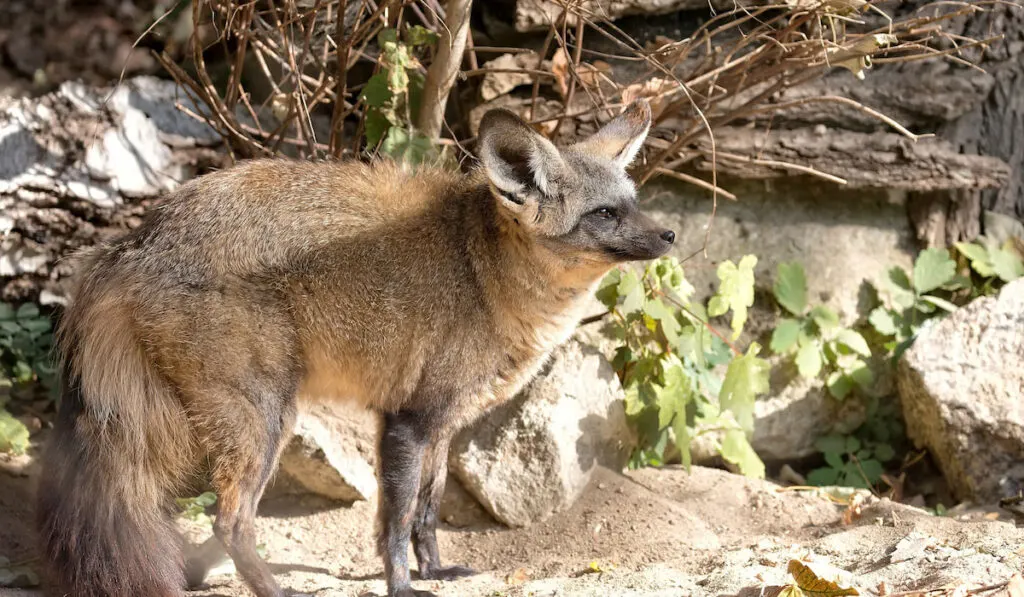
Blandford’s fox is a big-eared fox type with a long, hairy tail.
It has a soft, fluffy winter coat and a thin, paler summer coat.
Unlike other desert foxes, they don’t have hairy feet, but cat-like, bent, sharp claws.
Their specialized claws allow them to climb rocks with ease, and perform astounding jumps, jumping to ledges about 10 feet above.
They are nocturnal and mostly independent foragers, with occasional foraging in pairs. They rarely store food.
4. Pale Fox (Vulpes pallida)
The Pale fox has a lengthy body, short legs, and a tapered muzzle. Its coat is a bit thin, with a long and hairy tail.
Just like other desert foxes, they also have large ears, which is common among desert inhabiting canids.
Pale foxes are nocturnal. During the day, they rest in their burrows, while they go out and forage for food at dusk.
Interestingly, Pale foxes are capable of extracting water from their food, and can live without drinking almost at all.
5. Rüppell’s Fox (Vulpes rueppellii)
Yet another small fox type with long whiskers and large ears is the Rüppell’s Fox.
Their soft, hairy fur comes in two coats, a thicker coat for winter, and a thinner one for summer.
Like dogs, it is said that Rüppell’s Fox wag their tails. They also mark their territories with urine.
They are either crepuscular, or nocturnal. During the day, they are mostly found resting on their dens.
In addition, they use two types of burrows, namely the breeding den and the resting den, with the former being larger.
6. Cape fox (Vulpes chama)

Cape fox is the only fox type in the genus Vulpes that lives in South Africa.
It has large, pointed ears with a small, conical muzzle. The hair is soft, with a dense, wavy undercoat.
They are nocturnal, and are mostly seen in the early mornings and early evenings.
Although they form mated pairs, Cape foxes are solitary, and often found foraging alone.
The cape fox communicates through soft calls, whines, and chirps.
When alarmed, they release loud barks, though they are not known to howl.
In addition, they also use facial expressions and tail posturing to show emotions. When excited, the Cape fox lifts its tail.
7. Kit fox (Vulpes macrotis)

Kit fox is one of the smallest canids in North America. They have big ears with guard hairs that give them a grizzly appearance.
Their hairy pads protect them from the scorching heat of the sand.
They are mostly nocturnal, but some can be crepuscular.
They forage on their own, but they don’t tend to be territorial and would not mind living in pairs or small groups.
8. Bengal fox (Vulpes Bengalensis)

Bengal foxes are easily recognized by their long, fluffy, black-tipped tail. Their muzzle is elongated and pointy, with long, cone-shaped ears.
They are nocturnal and crepuscular, though some are found to be active during cold periods of day time.
They use three types of dens: the basic den that is used for short periods of rest; the complex den with numerous entrances; and dens under rock crevices.
Based on findings, it is said that Bengal foxes are more social. They are not wary of humans and are easily tamed.
9. Corsac fox (Vulpes corsac)

Compared to other foxes, the corsac fox has small teeth, wide skull, and a coat that gets thicker during winter.
They are excellent climbers, but poor runners. This fox type has a great sense of hearing, smelling, and seeing.
During hunting, it is said that Corsac foxes bark to threaten their rivals, while they release a high-pitched yelp for social greetings.
Unlike the Bengal fox, Corsac fox prefers to stay away from human disturbances.
10. Arctic Fox (Vulpes lagopus)
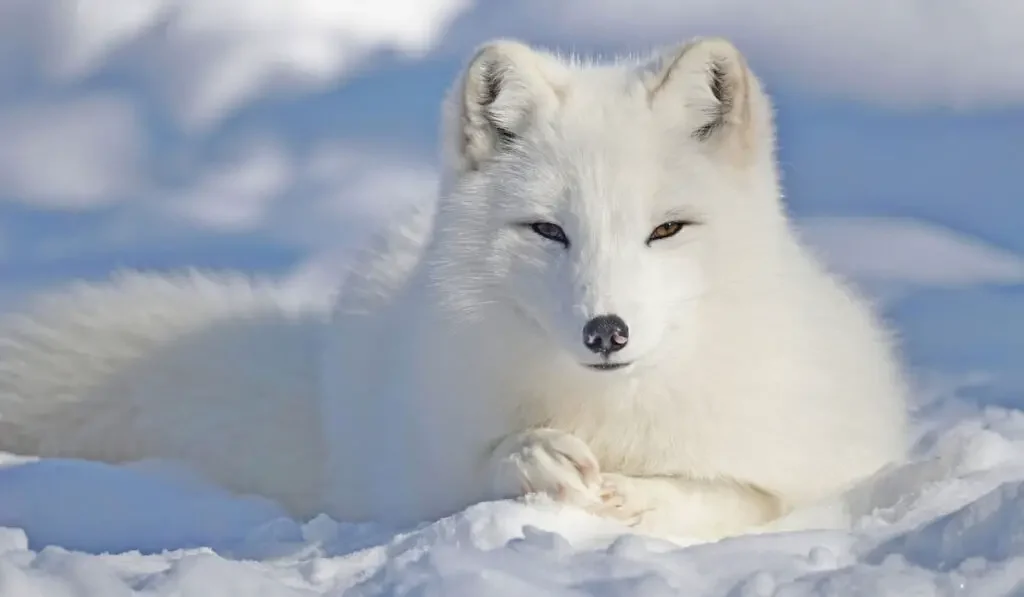
The Arctic fox has a natural white coat which allows it to camouflage to the tundra’s ice and snow.
As the rocks and plants became visible during summer, their coat color changes to brown or gray.
With their hairy pads, short ears, and short muzzles, the Arctic foxes easily adapt to -58°F Arctic temperature.
Their tails greatly help to aid their balance, as well as to provide them warmth during cold nights.
11. Red Fox (Vulpes vulpes)
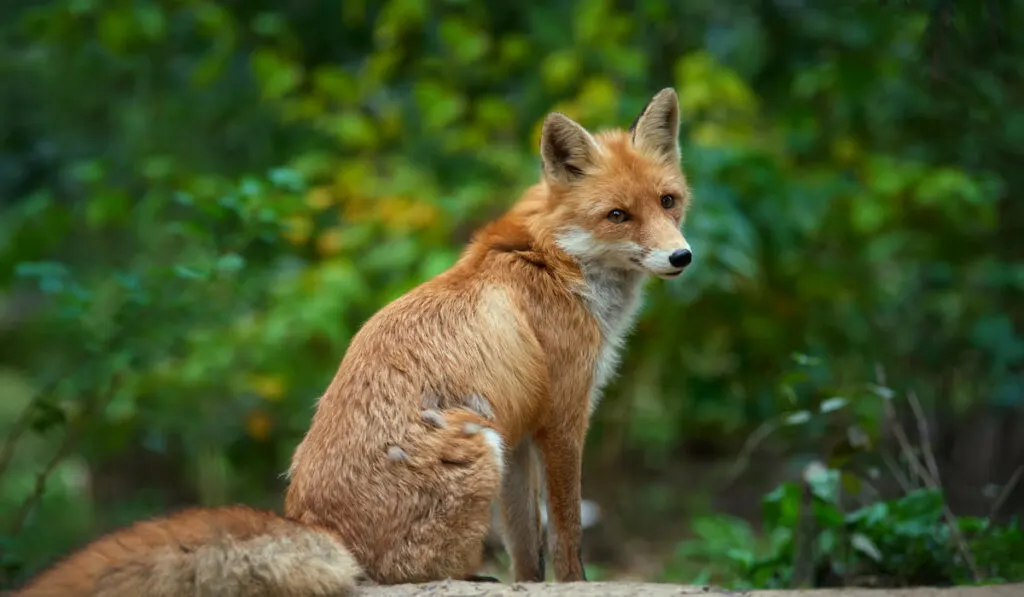
Perhaps the most popular fox type is the Red fox.
There are many of them in several parts of the world and they can be spotted in human environments, such as farms and ranches.
They are solitary and agile hunters who feed on anything that is available depending on their environment.
They are very resourceful and have earned their reputation for intelligence and cunning.
Like cats, Red foxes announce their presence by urinating on trees and rocks.
12. Bat-eared Fox (Otocyon megalotis)
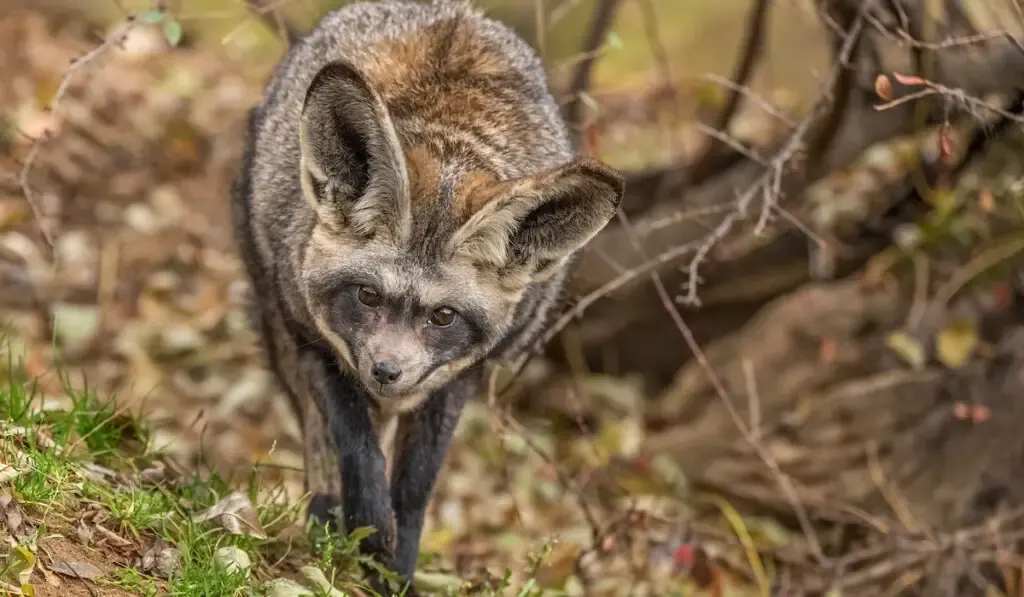
The Bat-eared fox is a small canid with large ears that helps distribute body heat and locate its prey.
It is the only insectivorous canid, and they feed especially on harvester termites.
If that is not available, they also eat other types of termites, birds, reptiles, and small mammals as well as fruits and berries.
Bat-eared foxes are social animals. They live and hunt in groups, often splitting up in pairs or in subgroups.
13. Island fox (Urocyon littoralis)
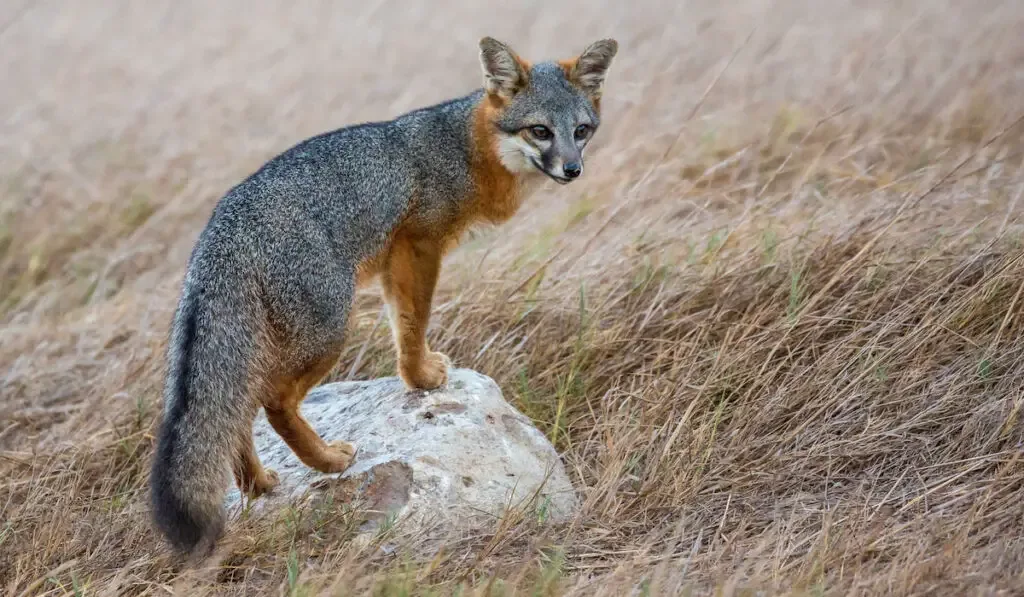
Island foxes are docile and easily tamed by humans. They are semi-domesticated as pets, or sometimes used for pest control.
They are nocturnal, and prefer to move by themselves rather than in packs.
The Island fox marks their territories and announce their presence by urine and feces.
14. Darwin’s fox (Lycalopex fulvipes)
Darwin’s fox is considered an endangered canid. They prefer open spaces, and are most active during twilight and before sunrise.
They have a broad diet, but mostly feed on mammals, beetles, reptiles, and invertebrates.
They also eat fruits, berries, and birds and amphibians in some cases.
15. Gray Fox (Urocyon cinereoargenteus)
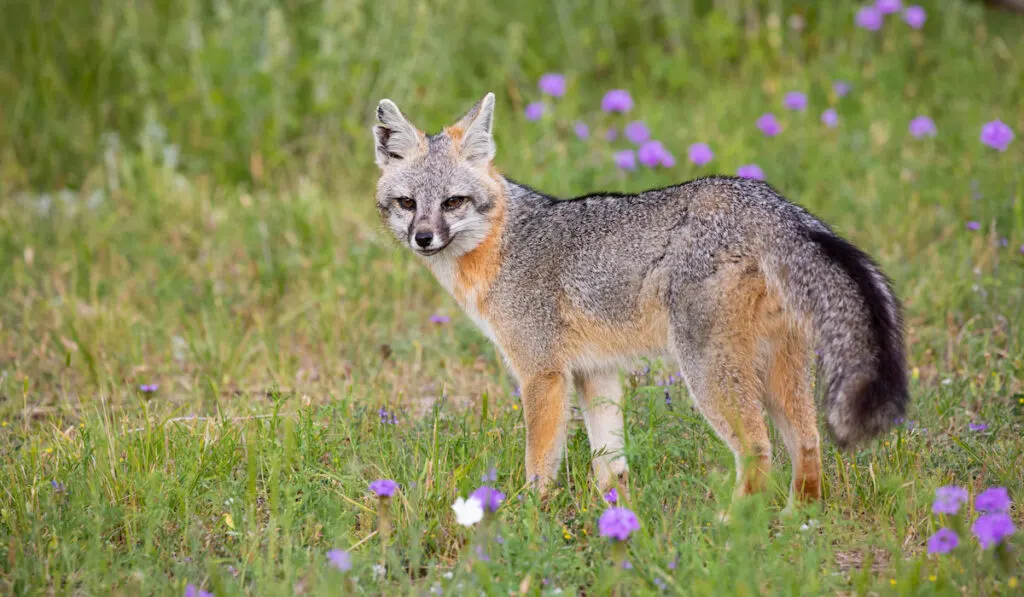
The only American canid that can climb trees, the Gray fox is easily determined by its “salt and pepper” grizzled upper coat and black-tipped tail.
Like cats, they easily climb trees through their sharp, hooked claws to escape from predators, or to reach for food.
Gray foxes are nocturnal and crepuscular. Aside from eating mammals and birds, an essential part of their diet is fruit and vegetables.
Generally, they consume more vegetables than the red fox.
16. Tibetan Sand fox (Vulpes ferrilata)
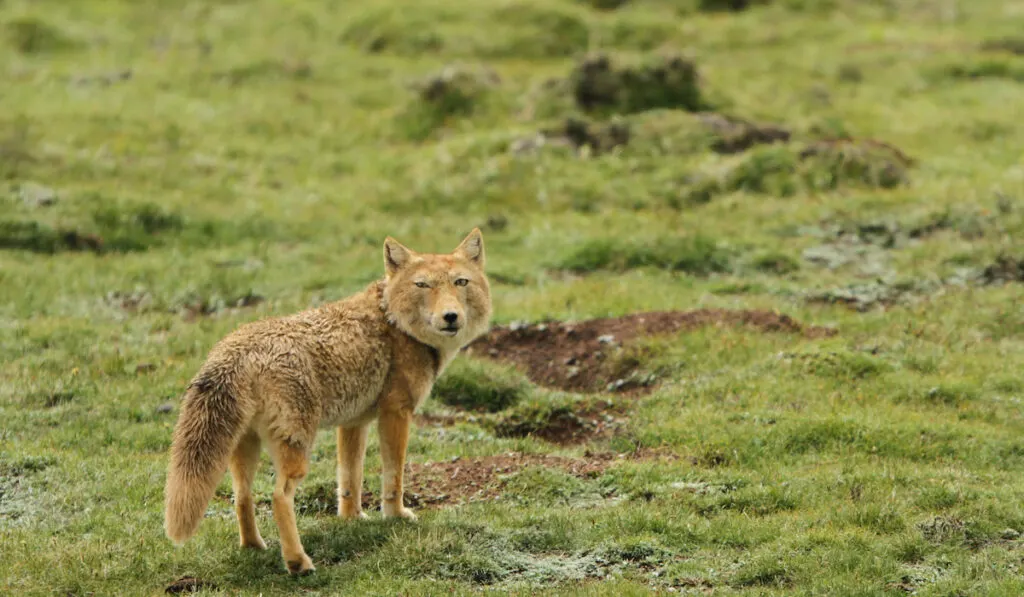
Tibetan Sand fox has a soft, thick coat with a tapered muzzle, short ears, and a fluffy tail.
They live on uplands and hills, far away from human disturbances.
Unlike most fox types, Tibetan sand foxes are mostly day time hunters.
During hunting, they develop commensal relationships with brown bears, wherein bears dig out plateau pikas and foxes chase them when they try to escape.
Tibetan sand foxes stay together with their mate, where they live and hunt together.
17. Sechuran Fox (Lycalopex sechurae)
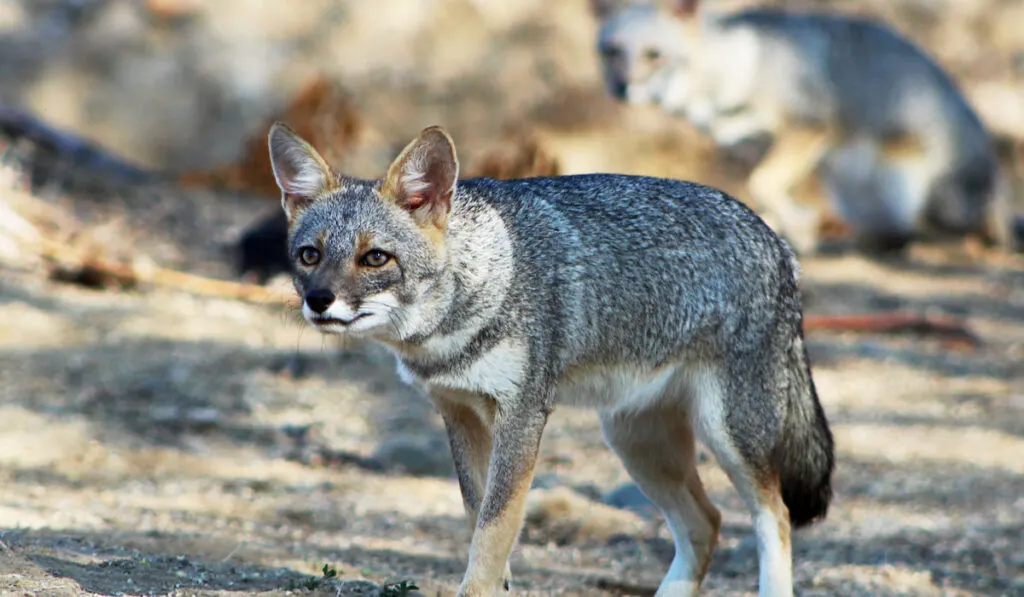
The Sechuran fox got its name on the place where it is found – the Sechura Desert in Peru.
They are nocturnal, and spend most of the day in their dens.
They are solitary foragers, though they are sometimes seen hunting in pairs.
Sechuran foxes are capable of eating only plants and vegetables when necessary.
They also glean water from their food, and can live without drinking water for long periods of time.
18. Hoary fox (Lycalopex vetulus)

The Hoary fox has slender limbs that make it an agile and excellent runner.
Their small teeth allow them to feed primarily on invertebrates, such as insects rather than large prey.
Just like most foxes, the Hoary fox is nocturnal and solitary foragers outside the breeding season.
Though they mainly eat insects, they also feed on small birds, small mammals, and fruits.
19. Culpeo (Lycalopex culpaeus)

Culpeo has a grizzly appearance with a black-tipped bushy tail. Its appearance is similar to that of Red foxes.
It is a predator that hunts mostly any prey. In some cases, they attack sheep which is why they are hunted and poisoned.
They are considered rare in some areas, but not endangered.
20. Pampas fox (Lycalopex gymnocercus)

The pampas fox is highly similar to the culpeo, and the feature that distinguishes them from culpeos is their black muzzles that extend up to the side of their mouths.
Pampas foxes are solitary, although they are seen in pairs during mating season.
They possess two unique behaviors: the first one is they collect useless things, such as clothes and leathers; and the second one is playing dead around humans.
They are mostly nocturnal, but are also seen active during the day in areas where there is little to no human population.
21. Crab-Eating Fox (Cerdocyon thous)

The Crab-eating fox is known to live at higher grounds during rainy season, and at lower grounds during dry season.
They are nocturnal and monogamous, often traveling in pairs and hunting independently.
They are more territorial during the dry season, though it is common for them to overlap in territories.
Final Thoughts
Out of all these fox types, the Red fox is the most common.
Just like humans, foxes are capable of identifying each other’s voices and they make good parents.
The female fox, called “vixen,” stays with the pups, while the male fox, called “dog fox,” provides them with food.
Now that you have learned about the different fox types, you can share your newfound knowledge with your family and friends!
References:
- https://www.boredpanda.com/fox-species-wildlife-photography/?utm_source=google&utm_medium=organic&utm_campaign=organic
- https://www.treehugger.com/strange-and-beautiful-fox-species-4863919
- https://www.livescience.com/27168-foxes.html#:~:text=Habitat,place%20to%20have%20their%20pups.
- https://www.nationalgeographic.com/animals/mammals/r/red-fox/
- https://www.nationalgeographic.com/animals/mammals/f/fennec-fox/
- https://www.nationalgeographic.com/animals/mammals/a/arctic-fox/
- https://en.wikipedia.org/wiki/Pale_fox
- https://en.wikipedia.org/wiki/Bengal_fox
- https://animaldiversity.org/accounts/Vulpes_velox/
- https://en.wikipedia.org/wiki/Cape_fox
- https://en.wikipedia.org/wiki/Blanford%27s_fox
- https://en.wikipedia.org/wiki/Tibetan_fox
- https://en.wikipedia.org/wiki/R%C3%BCppell%27s_fox
- https://en.wikipedia.org/wiki/Corsac_fox
- https://en.wikipedia.org/wiki/Kit_fox
- https://en.wikipedia.org/wiki/Island_fox
- https://en.wikipedia.org/wiki/Hoary_fox
- https://en.wikipedia.org/wiki/Bat-eared_fox
- https://animaldiversity.org/accounts/Cerdocyon_thous/
- https://en.wikipedia.org/wiki/Gray_fox
- https://en.wikipedia.org/wiki/Darwin%27s_fox
- https://en.wikipedia.org/wiki/Culpeo
- https://animaldiversity.org/accounts/Lycalopex_gymnocercus/
- https://en.wikipedia.org/wiki/Sechuran_fox
- https://www.mentalfloss.com/article/59739/14-fascinating-facts-about-foxes
